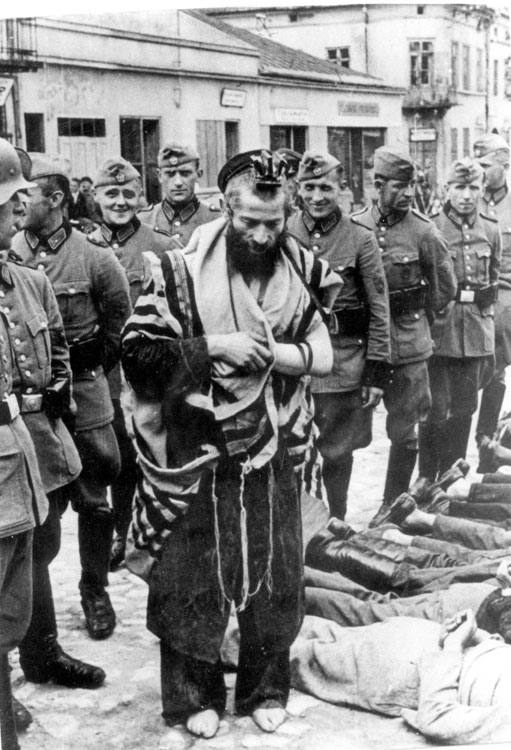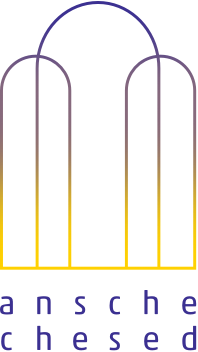
Years ago, seeking ritual ways of marking Yom HaShoah, I tried a few tricks, none of which worked.
I tried fasting (even though you’re not supposed to fast during Nisan). But that didn’t work, because I was the only one doing it. Fasting only works communally. And besides, did I think skipping lunch would help me participate in the suffering of the holocaust? What chutzpah.
Later I tried adapting a Tisha b’Av custom. On that day of national mourning, we don’t wear tefillin in morning prayers as usual, but delay them until the afternoon. Through this act of abjection we express estrangement from God, “who from heaven cast the glory of Israel to the ground [Lamentations 2.1].” Tefillin are our crowns and jewels. On a day of tragedy and woe, we cannot wear finery. For Yom HaShoah, I thought I would do Tisha b’Av one better, and not wear tefillin at all.
In fact, wearing tefillin is my favorite ritual mitzvah. The boxes contain tiny scrolls with Shema Israel and other Bible passages of commitment, covenant and memory. Strapping tefillin to my arm and head, I imagine that – more than figuratively, nearly literally – my body becomes a Torah scroll. Through my tefillin, I inscribe my body with a temporary tattoo that says: Shema Israel, Hashem Echad. God is One, and I belong. Performing this mitzvah reinforces my faith, deepens my prayer, brightens my spirit.
But Yom HaShoah marks faith shattered, prayers unanswered, spirit crushed. Perhaps I should forego tefillin on this day of hester panim, God’s hidden face, and stand before the religious black hole that is the holocaust.
This worked for me once or twice, but ultimately I set it aside and reinscribed my Shema Israel tattoo, even on the darkest day of the year. Instead of boycotting tefillin, I came to an opposite conclusion: millions of Jews found this mitzvah precious, before the Nazis murdered them or tortured them beyond faith. Who would it help if I refused to do a mitzvah? The famous 16th century Kabbalist and poet R. Elazar Azikri, author of “Yedid Nefesh,” said that every opportunity to do a mitzvah was a gift from God. Millions of murdered Jews would love an opportunity to don tefillin. Why would I refuse this heavenly gift? Maybe boycotting tefillin would violate Emil Fackenheim’s famous 614th commandment: give Hitler no posthumous victory. Maybe it would be better to increase Jewish quantity and intensify Jewish quality instead.
And I think of one of the most famous Shoah photos, taken in Olkusz, Poland, July 31, 1940, reproduced with this post. At dawn that day, the Nazis assembled the local Jewish men in the town square, then beat, kicked, trampled and harrassed them until nightfall, before sending them home. (All but two, who were shot.) Some were stripped naked. Some were forced to recite Christian prayers. Some were forced to pelt each other with stones.
In this photo, Rabbi Moshe Hagerman is barefoot, wearing his tallit. On his head is tefillin, smashed open; on his arm the tefillin strap hangs loose, not properly wound. At his feet, his neighbors lie face down. On either side of him young Nazi soldiers, smile mockingly. Was he forced to davven for the Germans’ amusement? Was he wearing prayer garb when they grabbed him at dawn?
We cannot see an evident expression on R. Hagerman’s face. He is not crying, and does not appear to express fear. I detect, or at least want to detect, a simple dignity in silent resistance to these thugs. His physical posture conveys composure; especially his hands, which are in the normative prayer posture, folded over his heart, right hand holding the left. In Kabbalistic symbolism, this signifies that the forces of chesed, love and kindness – the right hand – are sufficient to dominate the forces of gevurah, harshness and rigor – the left hand. I imagine him registering this kavvanah, silently davvening that he align himself with love over cruelty.
Less than two years after this horrible day, R. Hagerman, his wife Frimintel, and their children, Itzhak, Avraham, Malka and Natan, met a worse one. They were murdered in Majdanek in 1942.
When I think of wearing tefillin on Yom HaShoah, I feel very grateful that I can still mark my body with Shema Israel, Adonai Echad. I try to think of R. Hagerman, bearing abuse with grace. I imagine that he treasured his tefillin. Did they help hold him up, inspire him, prevent him from collapsing? Let his tormentors wear demonic symbols on their uniforms; he would wear the name of God on his. In his battered tefillin, I see a Jewish light radiating through a dark world.
This is the vision of the poet Yitzhak Katzenelson, himself murdered in Auschwitz, in 1944:
השמש בעלותה בבוקר מעל לעיירה בליטא ובפולין, לא תראה עוד בשעת שחרית, יהודי זורח בחלון
“The sun, rising each morning over a little town in Lithuania or Poland, will never again see, at the hour of the morning prayer, the radiance of a Jew, shining through the window.”




